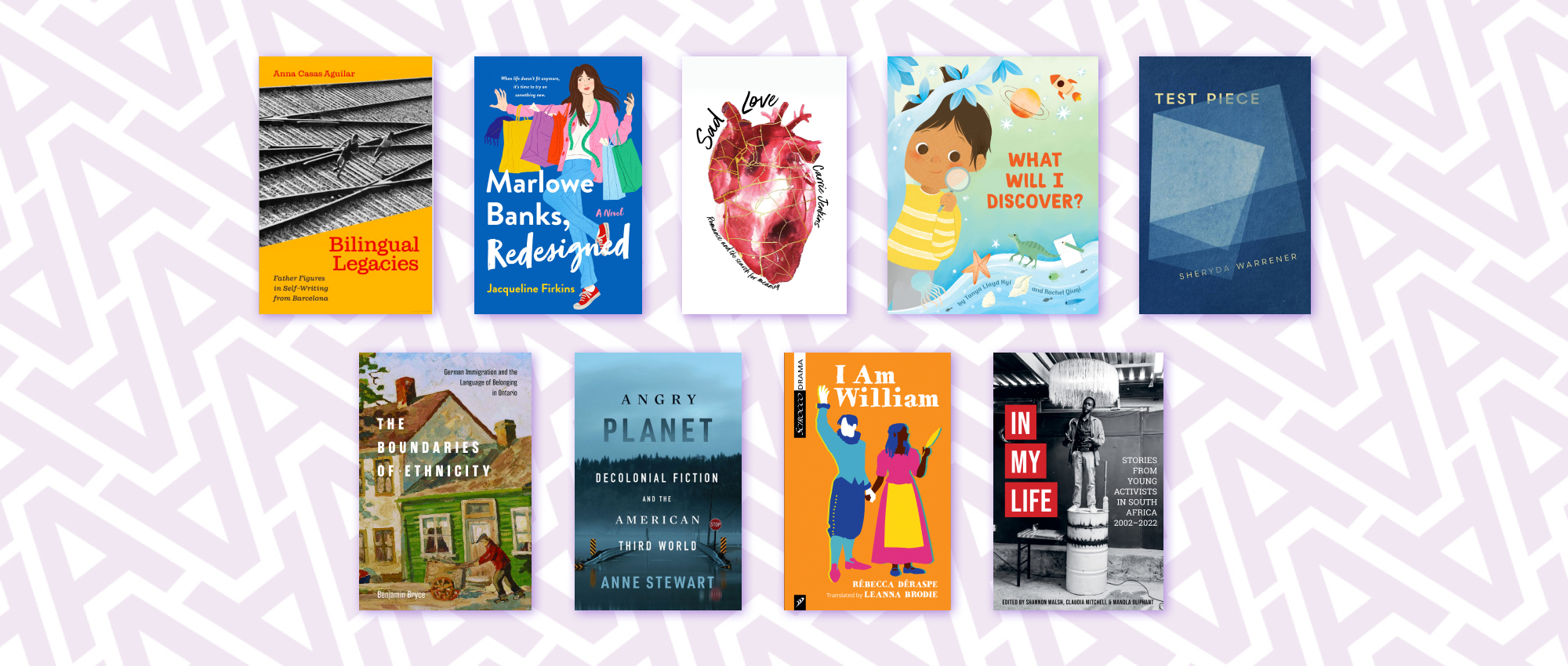

This past year, Arts scholars have published books ranging from contemporary and historical novels to poetry, children’s books, translations of world literature, and non-fiction topics spanning politics, food security, queer studies and more.
Landbridge [life in fragments]
By: Y-Dang Troeung, Associate Professor, Department of English Language and Literatures
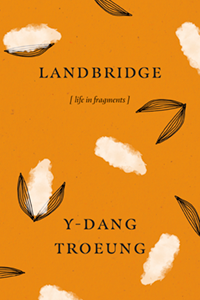

In 1980, Y-Dang Troeung and her family were among the last of the 60,000 refugees from Cambodia that then-Prime Minister Pierre Trudeau pledged to relocate to Canada. As the final arrivals, their landing was widely documented in newspapers, with photographs of the PM shaking Y-Dang’s father’s hand, reaching out to pat baby Y-Dang’s head. Forty years later, Y-Dang returns to this moment, and to many others before and after, to explore the tension between that public narrative of happy “arrival,” and the multiple, often hidden truths of what happened to the people in her family.
Y-Dang passed away of pancreatic cancer in November, 2022. This book was written in the last years of her life, and is part history, part family narrative, and part personal memoir. In precise, beautiful prose accompanied by moving black-and-white visuals, Y-Dang weaves back and forth in time to tell stories about her parents and two brothers who lived through the Cambodian genocide, about the lives of her grandparents and extended family, about her own childhood in the refugee camps and in rural Ontario, and eventually about her young son’s illness and her own diagnosis with a terminal disease. Through it all, Y-Dang looks with bracing clarity at refugee existence, refusal of gratitude, becoming a scholar, and love.
Nimrods: a fake-punk self-hurt anti-memoir
By: Christopher Patterson (Kawika Guillermo), Associate Professor, Department of English Language and Literatures
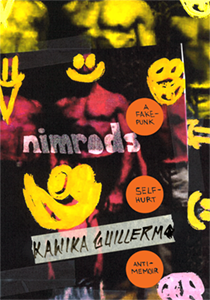

In Nimrods, Kawika Guillermo chronicles the agonizing absurdities of being a newly minted professor (and overtired father) hired to teach in a Social Justice Institute while haunted by the inner ghosts of patriarchy, racial pessimism, and imperial arrogance. Charged with the “personal is political” mandate of feminist critique, Guillermo honestly and powerfully recounts his wayward path, from being raised by two preachers’ kids in a chaotic mixed-race family to his uncle’s death from HIV-related illness, which helped prompt his parents’ divorce and his mother’s move to Las Vegas, to his many attempts to flee from American gender, racial, and religious norms by immigrating to South Korea, China, Hong Kong, and Canada.
Why did you write this book?
When I first tried to think of myself as a writer, I vowed never to write any kind of autobiography. It took a long time to find a style of writing that felt authentic enough to handle the reality I wanted to express. Nimrods is a strange, eclectic mixture of poetic and prose forms, but to me these were the tools I needed to dig deep, and not subject the raw materials of reality to stripping, watering down, polishing up. Through a hybrid prose-poetic style, Nimrods reflects on anger, alcoholism, and suicidal ideation—traits that do not simply vanish in the university. The book’s shameless mixtures of autotheory, queer punk poetry, musical ekphrasis, haibun, academic (mis)quotations, and bad dad jokes present a bold new take on the autobiography: the fake-punk self-hurt anti-memoir.
Witness to the Human Rights Tribunals
By: Bruce Miller, Professor, Department of Anthropology
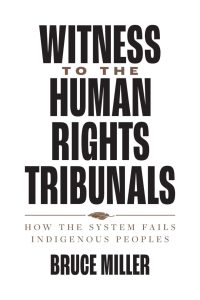

This book is an account of how the tribunal functions for Indigenous peoples, and follows my experiences serving as an expert in the tribunal and from witnessing other hearings. The book provides an up-close, ethnographic look at the actual functioning of the tribunal and considers the problems for complainants in meeting the tribunal criteria for framing a complaint, assembling evidence, and appearing in the tribunal. I show how the tribunal process reproduces some of the same problems of racism and discrimination which drove complainants to bring their cases. Further, I argue that the tribunal process shares characteristics of the broad spectrum of other cases with Indigenous peoples in which I have served as an expert over forty years, including treaty cases, land claims, fishing rights, criminal cases, and others. The book concludes with several possible remedies.
Why did you write this book?
I wish to make clear many of the obstacles Indigenous peoples face in bringing their cases to tribunals and courts. This book is my own account of these obstacles and expresses my hope for useful transformations of the legal system of Canada.
Fragment, Image and Absence in 1960s Japan
By: Ignacio Adriasola Muñoz, Associate Professor, Department of Art History, Visual Art & Theory
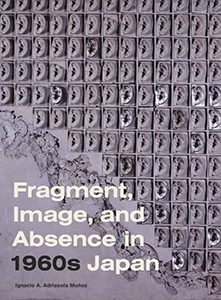

Fragment, Image and Absence discusses the transformation of the notion of object in experimental art and photography in 1960s Japan. In this decade, Japan experienced massive political, social, economic and environmental changes, which continue to affect the country. Prompted by these shifts, artists and critics explored different ways art could engage or resist such changes. Japanese artists turned to an intense interrogation of the very nature of the concept of the object—classically defined as a distinct, stable entity separate from other entities, including the subject. Instead, they posited an ambivalent and ambiguous visual language. In the process of developing a formal language which could engage these changing conditions, an entirely original critique of modernity was developed.
Why did you write this book?
I initially became drawn to this material while living in Japan in the early 2000s. Seeing work from this period featured prominently at various important surveys, I was struck by the plurality of materials, subject-matter and approaches to artistic creation that I saw, and the fact that I found their work so difficult to reconcile with the critical paradigms I was familiar with at the time. I started drawing connections between various figures, and more generally realized that even when specific individuals were not necessarily working together, they appeared to share a similar aesthetic, or affect. I then became invested in describing this affect. This question carried me through my doctoral work, and then onward, as I attempted a more comprehensive understanding of what this affect was.
The Cognitive Unconscious
Co-edited by: Rhianon Allen, Affiliate Professor, Department of Psychology
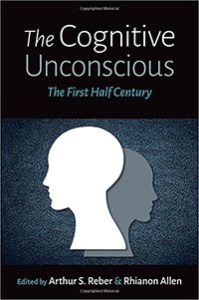

Research on unconscious process in cognition began a half century ago. This book features chapters by prominent researchers of unconscious cognition who take the opportunity to update us on advances in their field of research.
Why did you write this book?
It seemed time to step back and take a look at how a simple experiment in probability learning has bloomed into research into areas as diverse as psychotherapy, sports psychology, bias and aging.
A Korean Confucian’s Advice on How to be Moral
By: Don Baker, Professor, Department of Asian Studies
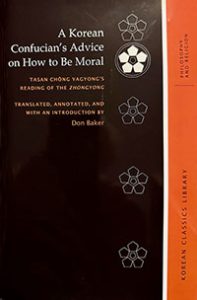

This book is an annotated translation of a work by one of Korea’s greatest philosophers. Tasan Chŏng Yagyong was a Confucian living in the 18th and 19th centuries who was influenced by Christian books published in China. He wrote this commentary on an ancient Confucian classic in which he revealed Christian influence in the way he departed from the usual readings of that classic. It is an early example of East-West interaction in Korea.
Why did you write this book?
I have been studying Tasan Chŏng Yagyong for four decades. I chose to translate this particular work, first, because he addresses the universal problem all human beings face: how to be moral. Second, I found Tasan an unusual creative thinker, both in the way he incorporated Western ideas into his Confucian philosophy and in the way he tried to push aside two millennia of interpretations of Confucian classics to unearth what he felt was their original meaning. I wrote this book to introduce this fascinating thinker to the West.
Routledge Handbook of the Digital Environmental Humanities
By: Luke Bergmann, Associate Professor, Department of Geography
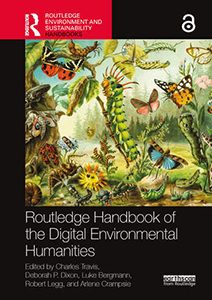

This book explores the digital methods and tools scholars use to observe, interpret, and manage nature in several different academic fields.
Employing historical, philosophical, linguistic, literary, and cultural lenses, it explores how the digital environmental humanities (DEH), as an emerging field, recognizes its convergence with the environmental humanities. As such, it is empirically, critically, and ethically engaged in exploring digitally mediated, visualized, and parsed framings of past, present, and future environments, landscapes, and cultures.
I Am William
Translated by: Leanna Brodie, Assistant Professor, School of Creative Writing
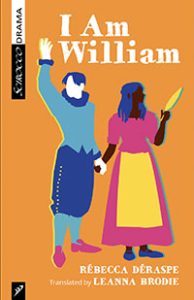

Margaret Shakespeare, age 13, must write her remarkable plays in secret: it is 1577, and a girl who can read and write is in danger from the witch-hunters. After all, as her father keeps reminding her, a woman’s place is in the home…next to a big pile of laundry. Once the sweet but dim William discovers his sister’s astonishing talent, a chain of events is set in motion that will change both their lives forever. What happens to women of genius in a world that wants only their silence? Can a sister’s determination—and a brother’s unfailing love—really conquer all? This original play with music tackles the big feminist questions with wit, heart, and infectious energy. It also won Quebec’s prestigious Prix de la critique.
Why did you write this book?
I translated this play from the original French because Rébecca Déraspe is a major voice in the contemporary Francophone scene, and her work – with its razor-sharp wit, dazzling poetry, and inclusive feminist vision – deserves to become part of the Canadian canon.
Wildfire & The Shoe
Translated by: Leanna Brodie, Assistant Professor, School of Creative Writing
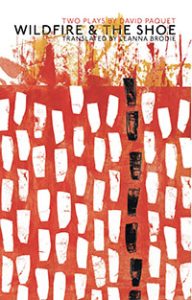

In Wildfire, three odd triplets, two misfits, and one misunderstood woman are all burning with solitude and desire. Through an exploration of heredity and fate, these seemingly ordinary characters choose to struggle against their isolation in extraordinary yet relatable ways.
In The Shoe, a weary mother, her perplexing son, their shy dentist, and his cocktail-sipping receptionist find themselves drawn together to face problems too daunting to deal with alone. From meltdowns to moments of tenderness, each of them is called on to find reserves of strength and empathy they never knew they had.
Why did you write this book?
I translated these plays from the original French because the internationally-produced two-time winner of the Governor General’s Award for Literature, David Paquet, is a surreal and darkly comic genius and his work is a revelation that enriches my English-speaking community.
The Boundaries of Ethnicity: German Immigration and the Language of Belonging in Ontario
By: Benjamin Bryce, Professor, Department of History
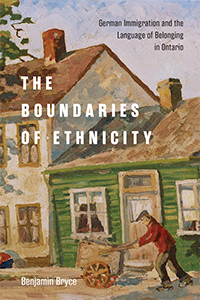

This book shows how people defined and contested the meaning of cultural and linguistic belonging in a region transformed by mass migration. It argues that children, parents, teachers, and religious communities shaped the meaning of German ethnicity in Ontario society. This negotiation, in turn, gave form to the nature of cultural pluralism in the province and became the foundation from which both later multiculturalism and government attempts to manage that diversity emerged in Canada. German speakers, hundreds of thousands of other immigrants, and other Canadians of different ethnic backgrounds created a framework between 1880 and 1930 that defined the relationships between the public sphere, communities, and families in Canada that would persist throughout the 20th century.
Why did you write this book?
I have been working on the history of migration since my PhD thesis. I think it is very important to show the voices and perspectives of migrants and their children and not just how the government or surrounding society talked about them.
It is also important to stress in a study of European immigration to Canada that this is a story of how a privileged group of immigrants and their descendants carved out a bigger space for cultural and linguistic pluralism in Canadian society. This history coincided with the displacement of Indigenous peoples from access to not only land and resources but also the generational transmission of language and culture.
Challenges to Democracy in the Andes: Strongmen, Broken Constitutions, and Regimes in Crisis
Co-edited by: Max Cameron, Professor, Department of Political Science and School of Public Policy and Global Affairs
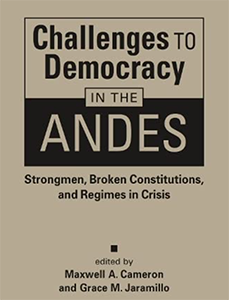

Although military coups are rare in the Andean countries, democracies remain prone to deep political crises caused by elected leaders (especially strongmen, or caudillos) who abuse their power—often with broad public approval.
This book attempts to explain this phenomenon, offering an analytical framework that disaggregates the components of democratic regimes, along with case studies and comparisons from Bolivia, Colombia, Ecuador, Peru, and Venezuela. It describes and explains political changes within the grey zone between democracy and authoritarianism.
Why did you write this book?
It is a successor to an earlier volume that also examined the state of democracy in the region. The work has been presented to the Organization of American States as well as in several academic conferences.
Bilingual Legacies: Father Figures in Self-Writing from Barcelona
By: Anna Casas Aguilar, Assistant Professor, Department of French, Hispanic and Italian Studies
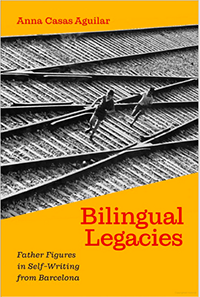

Bilingual Legacies is a book about fatherhood in the works of several Spanish authors born in Barcelona and raised during Franco’s dictatorship. Drawing from the autobiographical texts of four canonical writers—Juan Goytisolo, Carlos Barral, Terenci Moix, and Clara Janés—Bilingual Legacies explores how these authors understood paternal figures as well as how they positioned themselves vis-à-vis Spanish and Catalan literary traditions.
Why did you write this book?
In many ways, this book was born of my own bilingualism and the fascination I felt when reading authors who described their bilingual upbringing in Barcelona—particularly those who had experienced the Francoist repression of the Catalan language and culture.
Monumentality, Place-making and Social Interaction on Late Bronze Age Cyprus
By: Kevin Fisher, Associate Professor, Ancient Mediterranean and Near Eastern Studies
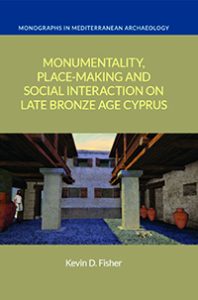

This book develops an approach to analyzing and understanding the socio-spatial dynamics of past built environments and then applies it to several Late Bronze Age (ca. 1700-100 BCE) monumental buildings from the Mediterranean island of Cyprus. In doing so, it considers what it is that makes a building monumental, focusing on the relationship between materiality, place-making and power. It investigates how new built environments—from rooms within particular buildings to entire urban landscapes—materialized new patterns of social interaction and organization that fundamentally changed the way most Cypriots lived their lives. This book argues that these built environments played an active and integral role in how and why social change occurred during this transformative period.
Why did you write this book?
This book allowed me to revisit my dissertation research. While that work forms the basis of the analyses presented in the book, it is otherwise substantially re-written, not only to incorporate and respond to new scholarship, but also to reflect my own changing views and make the research more accessible and relevant to a wider audience. It also gave me the opportunity to incorporate data from the ongoing fieldwork of the Kalavasos and Maroni Built Environments (KAMBE) Project, which I co-direct. While often overlooked in favour of its better-known neighbours, I hoped to demonstrate that Cyprus has much to offer as a case study of monumentality and its far-reaching social implications.
Marlowe Banks, Redesigned
By: Jacqueline Firkins, Associate Professor, Department of Theatre & Film
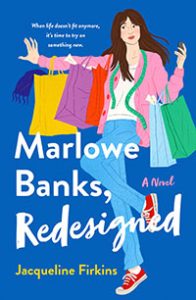

It’s romantic fiction about second chances. A young woman escapes to Los Angeles to start fresh after a failed costume design career and broken engagement. While she finds a sweet, unexpected romance, the story’s heart is this woman’s journey to rediscover herself, find her voice, and take control of her own narrative.
Why did you write this book?
I wanted to see my profession accurately depicted in a fictional setting, as well as explore themes about failure and gender and art-making and how we navigate careers in which we make ourselves deeply vulnerable while gradually building seemingly impossible levels of resilience.
Togani
Translated by: Bruce Fulton, Associate Professor, Department of Asian Studies, and Ju-Chan Fulton
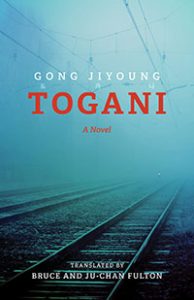

Togani is a Korean novel based on an historic case of child sexual abuse at a state-run institution. The novel sold nearly a million copies and, along with a 2011 film adaptation directed by Hwang Dong-hyuk, prompted the South Korean National Assembly to pass the “Togani Laws” to provide greater legal protections for children and vulnerable adults under state care and harsher penalties for those convicted of their abuse.
Why did you write this book?
Ju-Chan Fulton and I translated this novel to remind readers of the power of fiction to effect meaningful societal change. We found the novel compelling for the author’s success in giving voice to the disabled, a group traditionally marginalized in Korean culture. Moreover, the success of this translation among the students in my ASIA 457 seminar course on The Modern Korean Novel was a factor in the decision of the University of Hawai’i Press to accept our translation for publication.
Line Endings in Renaissance Poetry
By: Stephen Guy-Bray, Professor, Department of English Language and Literatures
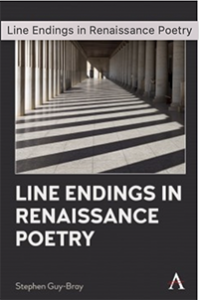

The short answer is that it’s about what the title says. I was interested in how a range of poets in the period chose to use the break between lines as something to generate poetic effects and meanings.
Why did you write this book?
This topic is one I often discuss in class and I couldn’t stop thinking about it.
The Masculinities of John Milton
By: Elizabeth Hodgson, Professor, Department of English Language and Literatures
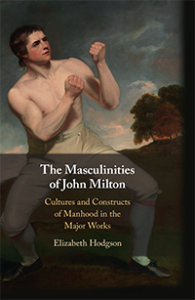

This is the first published monograph on Milton’s men. Examining Milton’s fantasies of manly authority in his major works, the book exposes the gaps between Milton’s pleas for liberty and his assumptions that White men like himself should rule his culture. From schoolboys teaching each other how to traffic in women in the Ludlow Masque, to his treatises on divorce that make the wife-less husband the best citizen, to the epics in which Milton wrestles with male small talk and the ladders of masculine power, his writings draw from and amplify his culture’s claims about manliness in education, warfare, friendship, citizenship, and conversation. This revolutionary poet’s works reveal how ambivalently manhood is constructed to serve itself in this era.
Why did you write this book?
John Milton is a very important political and literary figure, influencing not only generations of writers but also revolutionaries and reformers with his talk of liberty and freedom of conscience. I wanted to examine whether that liberty actually extends to women or others not like Milton himself. I also wanted to see how Milton’s men compare to Milton’s women, as there are many studies of his portrayals of women but much fewer of his male voices and characters, despite their prominence in his works.
Sad Love: Romance and the Search for Meaning
By: Carrie Jenkins, Professor, Department of Philosophy
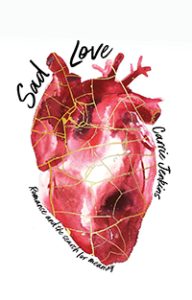

What if your happy ever after … isn’t?
This book is about sad love. Or, more accurately, it is about eudaimonic love, which has room for the full gamut of human experiences, both “positive” and “negative.”
Eudaimonia, in the old sense (older than Aristotle!), was about benevolent spirits. In a contemporary setting, I frame eudaimonia in terms of how we are influenced by the people, environments, communities, and networks around us. As I see it, a proper understanding of eudaimonia demands that we take into account the deep and dramatic implications of our interconnectedness: we find meaning in collaboration and creation, and meaning is what makes life worth living for us.
Why did you write this book?
Eudaimonic love is collaborative, creative, and dynamic. It grows and changes. It orients us towards living a meaningful life, but away from the “pursuit of happiness,” including the romantic “happy ever after.” When we centre eudaimonia rather than romance, we can see why sad love is not necessarily a failure condition. Sadness – and other “negative” emotions – can be a legitimate part of a meaningful love story.
Sad Love furthers the work of my 2017 book What Love Is and What It Could Be in critiquing and dethroning culturally dominant romantic ideologies of love, especially the idea that love is defined by certain kinds of feelings. I have stopped asking how to be happy ever after in love. That question doesn’t interest me anymore.
The Best Way to Get Your Way
By: Tanya Kyi, Lecturer, School of Creative Writing
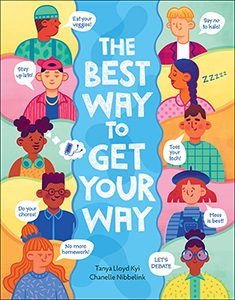

Kids are used to questioning the status quo — not that anyone ever listens. But what if there was a way of arguing that worked? What if kids could change adults’ minds? Welcome to debating! Here, young readers follow along as debaters tackle five hot-button issues. They go step-by-step through the debate process, from constructing an argument to rebutting an opponent. Then, readers get to pick a side… and they just might surprise themselves!
Why did you write this book?
I wanted to show kids that there can be two sides to an issue, and both sides can be valid and supported by research. This book shows kids how to think critically about information, and make their own decisions.
What Will I Discover?
By: Tanya Kyi, Lecturer, School of Creative Writing
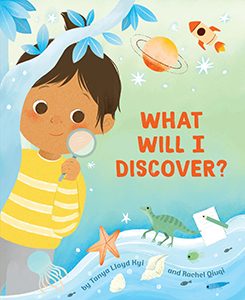

Sometimes, it seems as if scientists know everything about the world. They’ve recorded the songs of humpback whales, dug up the bones of dinosaurs, and even tracked the storms of Jupiter. But the young scientist in this picture book knows there is much more to explore, and has questions that no scientist can answer. (Yet!)
Why did you write this book?
As a child, I felt as if grown-ups knew everything, and there was nothing left for me to discover. I thought maybe I could map the bottom of the ocean, but I worried they wouldn’t wait for me to grow up.
In the Defense of Liberty
By: Keith Maillard, Professor, School of Creative Writing


It is a fast-paced historical novel exploring gender nonconformity and American politics. Set in Ohio in 1964 as Barry Goldwater is running for president, it follows Mason, a promising History undergraduate growing his hair long and questioning his gender identity as he becomes increasingly entangled with the personal dramas of a group of PhD students.
Why did you write this book?
Throughout my career, I have been writing about what we would now call gender. My intention originally for this book was to portray characters outside the gender binary, in a story set in a time when the language to describe their experience had not been conceived yet. Recently, however, I have been alarmed to see a vicious anti-trans movement growing in the US and leaking into Canada. Encouraged by the violently right-wing rhetoric of Donald Trump, Republican-controlled states seem to be in competition to see who can pass the most cruel and repressive legislation aimed at eliminating what they called “transgenderism.” I am entering into this conversation at exactly the right time. It is my hope that my novel, with its celebration of trans and non-binary characters, might help us to fight back.
Shadow Negotiators: How UN Organizations Shape the Rules of World Trade for Food Security
By: Matias Margulis, Assistant Professor, School of Public Policy and Global Affairs and Faculty of Land and Food Systems
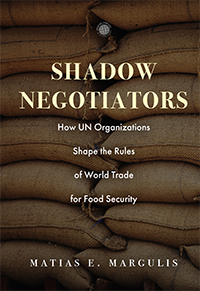

This is the first book to demonstrate that United Nations (UN) organizations have intervened to influence the discourse, agenda, and outcomes of international trade lawmaking at the World Trade Organization (WTO). While UN organizations lack a seat at the bargaining table at the WTO, these organizations have acted as “shadow negotiators” engaged in political actions intended to alter the trajectory and results of multilateral trade negotiations.
Drawing on analysis of one of the most contested issues in global trade politics, agricultural trade liberalization, the book demonstrates interventions by four different UN organizations—the Food and Agriculture Organization (FAO), the World Food Programme (WFP), the Office of the High Commissioner for Human Rights (OHCHR) and the Special Rapporteur on the Right to Food (SRRTF).
Why did you write this book?
To challenge the conventional wisdom about how global trade rules are negotiated and demonstrate the surprising ability of UN agencies to exercise significant influence.
The Avalanche Handbook – 4th edition
By: David McClung, Professor Emeritus, Department of Geography
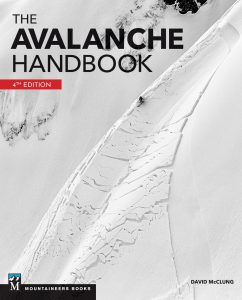

This new fourth edition of the book includes an in-depth review and update of the entire text, as well as information from outside experts in explosives, search and rescue, and other key topics. Comprehensive sections cover the formation, character, effects, and control of avalanches; avalanche terrain and forecasting; safety and rescue; risk management, preventive and protective measures; and more.
It’s technical yet accessible, and has extensive photos, illustrations, graphs, and charts throughout. The book is internationally recognized, and I hope it will continue to be essential reading for avalanche professionals and serious winter backcountry adventurers.
Bhai Vir Singh (1872–1957) Religious and Literary Modernities in Colonial and Post-Colonial Indian Punjab
Co-edited by: Anne Murphy, Associate Professor, Department of History
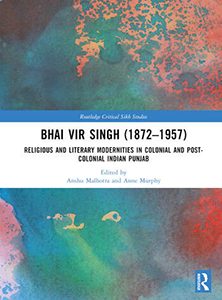

This volume brings together works by established and emerging scholars to consider the work and impact of Bhai Vir Singh (1872-1957), who was a major force in the shaping of modern Sikh and Punjabi culture, language, and politics in the undivided colonial Punjab—prior to the Partition of the province in 1947, and in the post-colonial state of India. The chapters in this book explore how he both reflected and shaped his time and context, and address some of the ongoing legacy of his work in the lives of contemporary Sikhs. The contributors analyze the varied genres—literary and historical—that were adopted and adapted by Bhai Vir Singh to foreground and enhance Sikh religiosity and identity.
Why did you write this book?
I co-edited this book with Dr. Anshu Malhotra (University of California at Santa Barbara) because there was a need to provide a comprehensive account of this figure and his tremendous impact on Punjabi literary and linguistic development, and Sikh discourses, in the colonial period. The book developed out of a SSHRC Connection Grant-funded conference held in August 2017 at UBC at the Centre for India and South Asia Research, which brought together scholars from North America and India to examine this important figure and his impact. The volume is important in particular because it looks across the diverse genres that Vir Singh engaged with, providing a more comprehensive and critical engagement with his work than has been presented in prior scholarship.
Grieving for Pigeons
Translated by: Anne Murphy, Associate Professor, Department of History
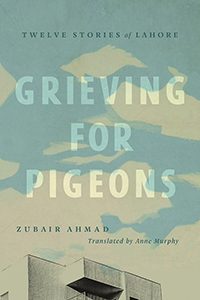

This book is a translation of a collection of stories by the Lahore-based, Punjabi-language writer Zubair Ahmad. Ahmad’s stories capture the lives and experiences of the people of the Punjab, a region divided between India and Pakistan. In an intimate narrative style, Ahmad creates a world that hovers between memory and imagination, home and abroad. The narrator follows the pull of his subconscious, shifting between past and present, recalling different eras of Lahore’s neighbourhoods and the communities that define them. The stories also evoke the complex realities of post-colonial Pakistani Punjab, and the lingering legacies of the Partition of Punjab at decolonization in 1947.
Why did you write this book?
This is the first book-length collection of short stories in Punjabi from Pakistan, where the Punjabi language lacks significant state support. Advocates for the Punjabi language in Pakistan—such as Mr. Ahmad—seek to broaden support for Punjabi in schools and governance. The publication of this book in English helps to create broader understanding of Punjabi in Pakistan. This translation also directly relates to my SSHRC Insight grant-funded research on Punjabi across the India/Pakistan border.
Singapore Flings: Literary Stopovers from Chekhov to Tagore
By: Ira Nadel, Professor Emeritus, Department of English Language and Literatures
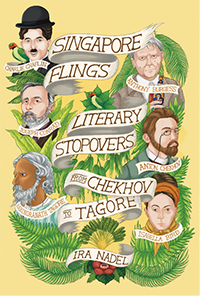

This is the first account of literary travellers to Singapore, from Chekhov to Conrad, Kipling, Malraux, Maugham, Neruda and more.
Why did you write this book?
I was prompted by the absence of any consolidated account of literary visitors to Singapore and the impact of Singapore on their writing.
Regulation Theory, Space and Uneven Development: Conversations and Challenges
Co-edited by: Jamie Peck, Professor, Department of Geography
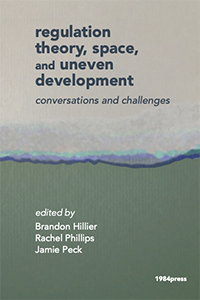

Exploring the diverse legacies and contemporary implications of ‘régulation’ theory in geography and related fields, this collection offers a timely reassessment of the régulation approach. In a spirit of sympathetic critique, the book looks forward as well as backward, staging dialogues between the régulation approach and economic geography, urban studies, political ecology and more.
It also provides original takes on the role and relevance of régulation theory and regulationist approaches in relation to a range of contemporary issues and concerns. These include financialization, globalization, neoliberalization, and uneven geographical development.
Why did you write this book?
This collaborative publishing project grew out of the geographical political economy graduate seminar and a follow-up workshop. Ten graduate students from the Department of Geography contributed chapters, exploring different aspects of the regulation-theoretical legacy. Two also joined me as co-editors of the book.
Mentoring Digital Media Projects
By: Patrick Pennefather, Assistant Professor, Department of Theatre & Film
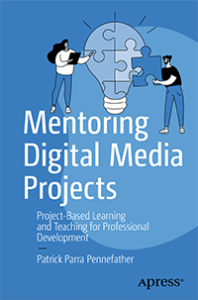

Mentoring is often a crucial, yet informal part of an organization’s best practices and skill development, whether targeted towards a team lead, project manager, designer, developer or a valued senior team member. This book provides practical strategies and methodologies for professionals to mentor others to successfully develop and deliver digital media projects across different types of settings.
Why did you write this book?
This book is significant in that it addresses the gap of an increasing number of adjunct and sessional instructors being hired across design disciplines who need support in critically understanding the nature of post-secondary education and how to manage their design, their learners and all the intertwined relationships. More than simply a how-to, this book challenges would-be mentors to critically examine their own work environment and mentoring process in order to better understand their approach to mentoring.
Queuejumping
By: Marina Roy, Associate Professor, Department of Art History, Visual Art & Theory
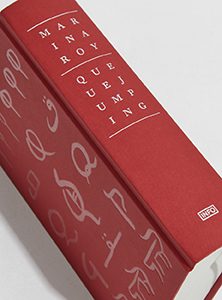

Taking encyclopedic form, Queuejumping unspools manifestations of capitalist, colonialist, agrologist and scientist impulses–all within the context of the letter Q. From queens, queers, quadrupeds and the Quran to quick, quiddity, and quotidian, it presents research-based art writing, poetry, lists (Q without U: words for Scrabble), found images and essays on humankind’s hunger to supersede the other in order to preference “the vertically-directed world.” Moving between the macro and micro—from millions of years of organic decay to the contemplation of contemporary art—the book addresses the origins of hegemonic forces, what is lost by winning, and what is gained by stepping out of line.
Why did you write this book?
Hatred of capitalism; love of biodiversity and language.
Language Contact in Ancient Egypt
By: Thomas Schneider, Professor, Department of Ancient Mediterranean and Near Eastern Studies
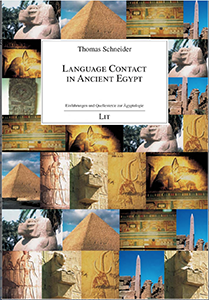

This book provides the first comprehensive introduction to the field of language contact and multilingualism in ancient Egypt before the Greco-Roman period (4th millennium BCE to 4th century BCE). It gives a survey of the historical evidence of linguistic interference of Egyptian with languages in Africa, the Near East and the Mediterranean, discusses the different attested phenomena of language contact, and offers a case study of foreign language communities in ancient Egypt. Detailed indexes make this book a rich source of linguistic information for general linguistics and neighbouring disciplines. Due to Egypt’s historical depth, Egyptian sources provide early linguistic evidence for extinct languages or languages attested only in more recent times, in Africa, the Near East and the Mediterranean.
Why did you write this book?
Ancient Egypt before the Hellenistic period has never been described as a multilingual society. Historically, the opposite is true. This historical reality has never been acknowledged for a number of reasons: Egypt’s overwhelming self-presentation as a culturally monolithic civilization, its pervasive “hieroglyphic culture”, an institutional history of the field that did not encourage the pursuit of a linguistically more diverse Egypt, and the very complex evidence available to us. From my book, a new view of ancient Egypt emerges as a linguistically diverse society.
The Interdisciplinary Handbook of Perceptual Control Theory, Vol. II: Living in the Loop
Co-edited by: Tom Scholte, Professor, Department of Theatre & Film
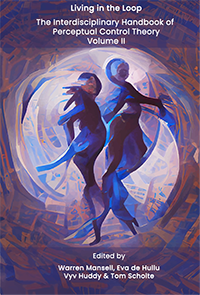

Given the fundamental challenges to society in this era, a radical rewrite of how we approach science and culture is necessary. This handbook applies Perceptual Control Theory (PCT), a foundational theory of human behaviour grounded in closed-loop negative feedback control, to achieve a much-needed convergence across the physical, life and social sciences, the humanities and arts. In doing so it addresses challenges such as mental illness, dementia, cancer care, toxic masculinity and societal oppression. It also reveals how PCT can be applied to practical issues such as understanding healthcare service implementation and human-machine interaction, as well as deeper questions such as consciousness and imagination.
Why did you write this book?
I co-edited and contributed to this book in order to introduce this powerful and parsimonious theory of human behaviour to an ever-wider audience cutting across traditional boundaries between arts and sciences. I hope that PCT might continue to gain traction as the transdisciplinary language that academia has been searching for over decades but has continued to overlook. Hopefully, this book will help make fruitful transdisciplinary collaborations, with real world implications, more likely to occur.
Taking Place: Building Histories of Queer and Feminist Art in North America
By: Erin Silver, Assistant Professor, Department of Art History, Visual Art & Theory
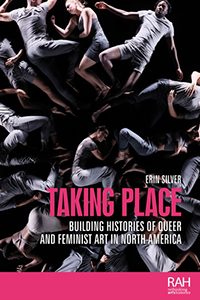

Taking Place examines feminist and queer alternative art spaces across Canada and the United States from the late-1960s to the present. It looks at how queer and feminist artists working in the present day engage with, respond to and challenge the institutions they have inherited. Through a series of regional case studies, the book interrogates different understandings of ‘alternative’ space and the possibilities the term affords for queer and feminist artistic imaginaries.
Why did you write this book?
The book seeks to test and further queer feminist art historical methods previously articulated in my co-edited (with Amelia Jones) volume, Otherwise: Imagining Queer Feminist Art Histories (Manchester University Press, 2016).
Queer Silence: On Disability and Rhetorical Absence
By: J. Logan Smilges, Assistant Professor, Department of English Language and Literatures
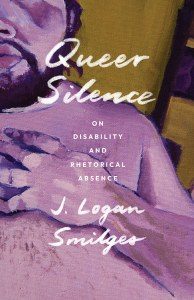

While silence is often linked to voicelessness, complicity, and even death in queer culture, Queer Silence insists that silence can be a generative and empowering mode of survival. Triangulating insights from queer studies, disability studies, and rhetorical studies, this book explores what silence can mean for people whose bodyminds signify more powerfully than their words.
Why did you write this book?
I’ve spent much of my life navigating forms of silence, invisibility, and absence that have been both painful and pleasurable. It’s through recognition of our mutual and parallel experiences of silence that I have built communities and learned to work toward collective liberation. This book is a testament to how so many people work within, as well as against, their own silence.
Angry Planet: Decolonial Fiction and the American Third World
By: Anne Stewart, Lecturer, First Year and Interdisciplinary Programs
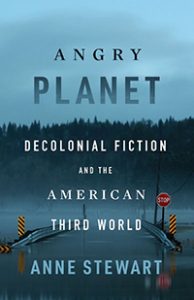

Before the idea of the Anthropocene, there was the angry planet. Many novels from the end of the millennium center around an Earth that acts, moves, and shapes human affairs, and creates dramatic, nonanthropogenic change. Anne Stewart shows how this fiction brought Black and Indigenous thought into conversation, offering a fresh account of globalization in the 1990s—the era that first made connections among environmental crises and antiracist and decolonial struggles.
Why did you write this book?
I saw the need to develop a theoretical framework for reading with and through planetary motion. In the 1990s, authors like Colson Whitehead, Octavia Butler, and Leslie Marmon Silko wrote novels that brought Black and Indigenous thought into conversation, and offered an alternative account of globalization in the 1990s from the perspective of the American Third World. This era doesn’t get enough credit for having made the first connections among environmental crises and antiracist and decolonial struggles. Angry Planet is a recent history of dissent that speaks to the young movements of the twenty-first century which are grappling with the major challenges of white nationalism and climate change denial.
In My Life: Stories from Young Activists 2002–2022
By: Shannon Walsh, Associate Professor, Department of Theatre & Film
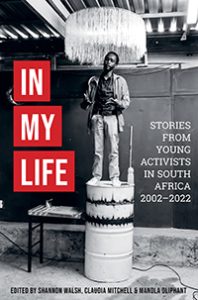

It follows the paths of a group of racially diverse young AIDS activists from South Africa, first brought together as part of an educational HIV-prevention program in Cape Town in 2002. Over the next twenty years, we follow their inspiring and harrowing journeys, as they move from hopeful and passionate teen activists, through the tragedies and triumphs of transitioning to adulthood. With candour, they tell stories of hardships and loss, mental health issues, grief and violence, but also of personal transformations, love, friendship, artistic achievements, community connection and thrilling social justice wins. Their stories provide a glimpse into the long tale of activism and of educational work, forever asking the question: what difference does it make?
Why did you write this book?
This is the result of ethnographic research conducted over 20 years, starting when I first went to South Africa as a MA student. As the early post-apartheid enthusiasm and activism transformed and changed, stories have been a place where one could find solace and refuge, or find ways to be connected again. The stories in In My Life reflect the shifting times and context in South Africa, the transformation of the country and the complicated stories of everyday life in the cracks among those who are artists, writers, creators, activists, researchers, teachers and many other things in between and beyond.
Test Piece
By: Sheryda Warrener, Lecturer, School of Creative Writing


Though they started from an impulse to see myself more clearly, the poems in Test Piece ended up becoming more expansive meditations on seeing and vision. They engage with the process and practice of art-making, and specifically with abstract minimalist works like those by Eva Hesse, Anne Truitt, Ruth Asawa, and Agnes Martin.
Why did you write this book?
To explore materiality, beauty, art, and self.


